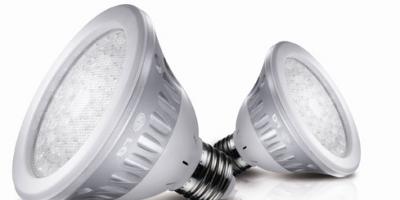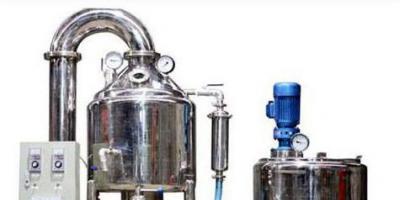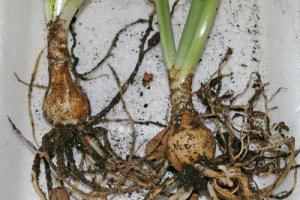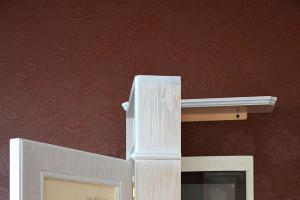Statistics say that every second woman has suffered from thrush at least once in her life. This is not surprising, since the causative agent of the disease - a fungus from the genus Candida - is always present on the mucous membranes of the vaginal area. The disease (candidiasis) develops when optimal conditions are created for the life of the fungus, and its population rapidly increases.
Figure 1 - Candidiasis - a common disease
The Candida family includes about one and a half hundred species of fungi. Of these, 20 species are capable of living in the human body. In 90% of cases, the disease is caused by fungi of the Candida albicans variety.
Candida is transmitted:
- during primary infection - during childbirth or during the first year of life;
- in case of secondary infection - during intimacy (almost 100% probability), through contact and household contact (underwear, household items, food).
If the word “Candida” appears in your test results, do not rush to the pharmacy. The main thing is not the presence of the fungus, but its concentration and the presence of signs of disease. Thrush manifests itself:
- in women - in the form of vulvovaginitis (colpitis);
- in men - in the form of balanoposthitis.
The main signs of thrush in women:
- itching, burning, irritation, swelling, redness of the mucous membranes;
- curdled discharge from the genitals, the smell of the discharge is sour milk;
- pain during sexual intercourse;
- burning when urinating.
If the disease is diagnosed in one “half,” everyone needs treatment. Therapy “one at a time” does not make sense - all the fungi will come back after the first intimacy.
You should not have sex until the thrush is completely cured. If the disease is diagnosed in your sexual partner, and the symptoms do not bother you, you will still have to be treated.
The main signs of infection with Candida fungus in men:
- itching, burning sensation;
- redness, swelling of the head, foreskin, whitish coating;
- pain during intercourse.

Figure 2 - Candida is diagnosed in women and men
Candidiasis is diagnosed by:
- external signs;
- results of bacterial culture of smears from the vagina and urethra;
How to cure thrush in a woman?
Candida loves warm, moist places with minimal air access, so the fungus is more than comfortable on the vaginal mucosa. To get rid of an unpleasant neighborhood, you need to use the following drugs:
- local action: vaginal suppositories, tablets, creams with econazole, clotrimazole, miconazole, econazole (Clotrimazole, Pimafucort);
- systemic action: tablets, capsules with fluconazole, itraconazole (Nystatin, Fluconazole, Difluzol, Diflucan);
- drugs to strengthen the immune system, probiotics, symbiotics (Wobenzym, Lactovit, Dactiale, Derma-Pro, Vagilak, Viferon).

Figure 3 - Untreated disease spreads quickly
On average, the course of treatment takes from 3 to 6 days. Fungal spores mature within 20 days, so a second course of treatment may be necessary. Some medications (such as Betadine) can be used during menstruation.
In 20% of cases, the treatment prescribed by the doctor does not help. If thrush continues to bother you after a week:
- This is not candidiasis. You will have to retake tests and undergo additional examinations.
- the disease is not caused by Candida albicans, but by another type of fungus that is more difficult to destroy;
- This is a relapse that is possible with diabetes, during antibiotic therapy, or reduced immunity.
If relapses of candidiasis occur more than 4 times a year, the doctor will prescribe preventative treatment.

Figure 4 - Chronic and recurrent candidiasis requires lifestyle changes
Local medications can cause inconvenience - they may leak and stain clothes. So that they are evenly distributed over the surface of the vaginal mucosa and do not cause discomfort, it is best to use them before bed. Suppositories and tablets should be placed approximately in the middle of the vagina. Medicines placed too close will leak out, and if placed too far away they can injure the delicate cervix.
If you have thrush, douching and other methods of “washing there” are prohibited, as this causes an imbalance of the microflora.
How to cure thrush in a man?
Help to overcome candidiasis:
- locally - creams with clotrimazole;
- systemically - fluconazole (drugs Fluconazole, Diflazon, Forkan, Medoflucon, Mikosist).
The duration of the average course of treatment is 5 days.
During treatment, underwear and towels should be changed daily. Hygienic procedures are carried out using products without fragrances or additives. Despite the fact that most drugs are used topically, alcohol should not be consumed during treatment.

Figure 5 - Men are prescribed drugs of local and systemic action
How to avoid relapse of candidiasis?
Candida is an opportunistic microorganism that is usually present in the microflora of intimate areas. In order not to provoke its excessive reproduction again:
- strengthen your immune system;
- do not wear tight synthetic underwear;
- observe the rules of personal hygiene;
- take enough vitamins, reduce the amount of fast carbohydrates;
- reduce the amount of foods and drinks that contain mold and yeast;
- use contraception;
- avoid stress.

Figure 6 - During treatment of thrush, you will have to adjust your diet
Regardless of lifestyle, thrush can develop:
- when hormonal levels change (pregnancy, taking birth control pills, endocrine diseases);
- after operations;
- as a result of antibiotic therapy;
- during serious illnesses;
- with vaginal dysbiosis;
- after hypothermia.
What happens if thrush is not treated?

Figure 7 - Thrush that is not treated in time is fraught with serious problems
The diagnosed disease must be treated. Despite the fact that Candida fungus is an opportunistic microorganism, the body needs help to cope with overgrown colonies and neutralize the consequences of their vital activity. Untreated disease:
among women:
- will reduce immunity, resulting in the development of secondary sexually transmitted infections;
- will provoke erosion of the mucous membrane;
- disrupts the menstrual cycle;
- will cause inflammation of the cervix.
for men:
- will lead to prostatitis, vesiculitis, which can cause infertility.
How to cure thrush during pregnancy?
Statistics say that Candida fungi are detected in 80% of expectant mothers. Before giving birth, you must say goodbye to them. If this event is postponed until later, the baby will become infected during childbirth. Transmission of the fungus is also possible after - during feeding or hygiene procedures. This is fraught with thrush in the mouth, in girls - on the genitals, and a series of subsequent problems with the baby’s health.
To treat expectant mothers, gynecologists prefer to use topical medications - suppositories, tablets, creams. Suppositories Pimafucin and Primafungin can be used in any trimester of pregnancy, Terzhinan tablets - in the second. Systemic drugs are prescribed if the disease cannot be cured locally. Only the doctor prescribes medications and outlines the treatment regimen, depending on the clinical picture; amateur activity is unacceptable here.

Figure 8 - Self-medication of candidiasis is unacceptable
How to cure oral thrush?
Since Candida fungi live on all mucous membranes, they can cause diseases in the oral cavity. Characteristic features:
- redness of the mucous membrane, swollen palate, gums, throat;
- “geographical” language - the surface is covered with whitish dots, subsequently - spots, shaped like a circle or oval;
- painful swallowing;
- cracks in the corners of the mouth, which quickly become covered with a cheesy coating. The redness increases in size;
- temperature increase;
- enlargement of the submandibular lymph nodes.
Untreated candidiasis moves from the tongue to the cheeks, then to the lips and throat. When you try to scrape off the plaque, blood appears.
Candidiasis of the mucous membranes of the oral cavity is diagnosed visually (at advanced stages), based on the results of bacterial culture and laryngoscopy. When treating children, drugs are selected taking into account their age category.

Figure 9 - Candida fungi can live even in the mouth
Thrush in the mouth is especially dangerous for infants. Discomfort in the oral cavity causes them to refuse to suck, which is why dehydration and exhaustion quickly develop. A fungal infection can spread to other vital organs - the intestines, lungs, etc. Girls develop vaginal candidiasis, which provokes inflammation and the development of synechiae.

Figure 10 - Advanced thrush threatens the baby’s life
To overcome the disease at the initial stage, it is enough to treat the oral cavity and affected areas with an antiseptic solution (for example, Miramistin, Hexoral, Maxicold) and an antifungal drug (for example, Candide, Nystatin). You can rinse your mouth with a soda solution. At more severe stages, systemic drugs are used - Fluconazole, Mikosist, Fucis, Diflucan. Lips and skin can be treated with antihistamines (Fenistil). Avoid contact with mucous membranes (eyes, nose, mouth).

Figure 11 - Untreated fungus colonizes the palate, esophagus, lungs, and other organs
During the treatment period, reduce your consumption of sweets, avoid smoked foods, spicy, salty foods, foods containing yeast, and mold.
Do not under any circumstances lubricate the affected areas of the mucous membranes and skin with rose jam. This promotes the growth of fungal colonies.
Treatment of all types of thrush should be carried out under the supervision of a doctor. Strengthen your immune system, follow the recommendations of nutritionists, use contraceptives, and most likely you will not face an unpleasant neighborhood. Be healthy!
Video 1: How to treat thrush (gynecologist L. Shupenyuk answers)
Video 2: How to cure thrush in women and men. Simple tips. Effective means
Video 3: Treatment of thrush in the mouth of a baby
Video 4: About self-medication for thrush: why you shouldn’t
Having discovered signs of candidiasis, not everyone seeks qualified medical help. Therefore, many are concerned about the question of whether and how it is possible to quickly cure thrush at home. Although we should not forget that traditional methods of treatment are not always a good alternative to drug therapy. Therefore, in any case, you cannot do without synthetic drugs, especially if we are talking about a clear scheme.
The treatment of candidiasis infection must be approached with all seriousness and scrupulousness, otherwise there is a high risk of relapses (hence). Taking into account the fact that vulvovaginal candidiasis is most common in women, balanoposthitis is most common in men, and oral thrush occurs in children, the approaches to treatment are somewhat different.
On average, the fastest treatment for thrush is carried out in one week, provided that the form is acute and not severe. As a rule, the first three days of intensive treatment are sufficient to eliminate unpleasant symptoms. But to completely eliminate the pathogen, it is worth completing the entire course of prescribed therapy.
Is it possible to do this in 1 day and under what conditions?
There are times when one day is enough to cure candidiasis.
Predisposing conditions are:
- the fact of primary infection (that is, according to the patient’s words and according to the entries in the medical record, primary thrush is established);
- acute course of the disease (in the case of chronic candidiasis, treatment is carried out for several months);
- a mild form of infection (if thrush is widespread and severe, it will not be possible to cure it in one day);
- absence of concomitant acute or chronic pathology (patients with immunodeficiency, endocrinopathy and other diseases are prescribed a standard course of treatment for at least one to two weeks);
- the presence of a smear and bacteriological culture confirming the diagnosis of candidiasis;
That is, you can quickly cure thrush in 1 day with a combination of a number of factors and only with the help, which only a doctor has the right to prescribe. Often, fluconazole-based drugs are used (Futsis, Flucostat, Fluconazole, Diflucan, etc.), which have quite powerful fungicidal and fungistatic effects. The instructions say that for the treatment of acute forms of candidiasis, a single dose of a tablet or capsule is sufficient (150 mg for all analogues).
Quick treatment of candidiasis: scheme
Effective therapy for thrush includes the complex use of various drugs with antifungal and immunomodulatory activity, as well as those capable of restoring microbiocenosis in women. No less useful will be the use of , which have an anti-inflammatory, reparative and cleansing effect.
For men
In order to cure thrush at home quickly and effectively, representatives of the stronger sex are recommended:
- mandatory use of the tablet form of the antimycotic: Nystatin is prescribed one piece twice a day for 14 days; Itraconazole can be used as a capsule for six days; Ketoconazole is taken one tablet (200 or 300 mg) with meals once a day for 4 weeks;
- to relieve and remove plaque, use local antimycotics: Pimafucin cream is applied twice a day in a thin layer to areas of skin covered with plaque for two weeks; Triderm combination ointment is applied twice a day for a course of 10 to 14 days. It is possible to use Miramistin cream, Ketoconazole, Nystatin ointment and much more;
- as an auxiliary therapy, use proven folk recipes: compresses with chamomile and calendula (the ingredients are mixed in a 1:1 ratio (2 tablespoons each) and pour ½ liter of boiling water, after the mixture has boiled, it is allowed to brew for 30 minutes and cool, and then used as compresses for 10 days); treatment of the affected areas with the help of - twice a day for 7-10 days;
- during treatment, avoid sexual intercourse or carefully protect yourself;
- limit smoking and drinking alcoholic beverages.
Women
To get rid of painful thrush, women need to follow the following prescriptions and recommendations:
- etiotropic therapy is carried out with antifungal tablets Mikomax (single dose of 150 mg), Nizoral (400 mg with meals for two weeks) or (100 mg for three days);
- local treatment is carried out with the help of suppositories: Polygynax (one piece once a day, for a course of 10 days), Hexicon (one suppository twice a day for 10 days), Lomexin (at a dose of 200 mg inside the vagina once);
- You can also quickly cure thrush at home using folk remedies. The soda solution achieves its healing properties by creating an environment in the vaginal cavity that is unfavorable for the life of fungi (a teaspoon is dissolved in two hundred milliliters of warm boiled water, after which it is performed overnight for 3-5 days). Douching with Miramistin is no less effective (10 ml of the drug is mixed with 10 ml of water and the procedure is performed twice a day for 7-10 days). Furacilin solution, recipes with celandine or calendula are also great for fighting candidiasis;
- after completing the course of medications, it is necessary to restore the microflora of the vaginal cavity and intestines (within two to four weeks, Linex or Bifiform for a month);
- do not forget about compliance, that is, you should take a shower at least 1-2 times, do not use soaps, gels and sanitary pads with fragrances;
- In addition to the above, it is recommended to limit carbohydrate intake.
For children
To treat thrush in children use:
- Nystatin tablets: take ¼ tablet and mix it with a small amount of water, after which the baby’s oral cavity is treated 3-4 times a day;
- or Miramistin solution, which is also used to wipe areas of hyperemia and plaque twice a day for a week;
- older children can rinse their mouths with Givalex or Tantum Verde on their own;
- Probiotics are mandatory prescribed for a month (Linex for children, Enterozermina, etc.);
- A nursing mother should thoroughly wash her hands and breasts before feeding and boil bottles and pacifiers for disinfection.
How to prevent the occurrence of the disease?
 Men are advised to protect themselves during sexual intercourse, get rid of bad habits and promptly treat any infectious and somatic diseases. When using antibacterial agents, be sure to take probiotics and, if necessary, take a prophylactic course of antifungal drugs.
Men are advised to protect themselves during sexual intercourse, get rid of bad habits and promptly treat any infectious and somatic diseases. When using antibacterial agents, be sure to take probiotics and, if necessary, take a prophylactic course of antifungal drugs.
A woman should not abuse carbohydrates in her diet. At the same time, she is obliged to observe intimate hygiene every day, not to wear synthetic underwear, and not to douche for no apparent reason. In addition, it is recommended to carefully monitor your health and not trigger concomitant pathologies.
In childhood, prevention consists of sanitizing the maternal birth canal, minimal contact with medical personnel, and mandatory cleaning of the child’s utensils and accessories.
Thrush (scientifically called candidiasis) is an extremely common problem in gynecology. 80% of the fair sex encounter it at least once in their lives. Treatment with advertised drugs does not always end in success. In almost half of women, the disease recurs. In 30% of patients, it becomes chronic and manifests itself with intense symptoms 4 times a year or even more often. To get rid of thrush forever, you should undergo comprehensive treatment and make adjustments to your lifestyle.
General information about the disease
Candida can change - acquire a thread-like shape and the ability to penetrate deep into the epithelium
The vaginal form of candidiasis is provoked by microscopic fungi of the genus Candida. 86% of thrush cases are caused by a strain (type of fungus) of Candida albicans. The rest are other representatives of the genus.
All strains of candida are classified as opportunistic fungi. As long as their growth and reproduction are not intense, health problems do not arise. When a time favorable for the fungus arrives, the proliferation of microbes accelerates and they cause disease.
Provocateurs
There are many reasons for the development of candidiasis:
- decreased immunity;
- disturbances in the composition of the vaginal microflora;
- chronic mucosal injuries;
- ingress of “foreign” strains of fungus.
Immunity decreases after acute infectious diseases, as well as in sluggish forms of infection. The protective properties of the immune system are reduced by endocrine disorders and medications (COCs, hormonal drugs, chemotherapy drugs, antibiotics).
The balance of microflora shifts towards pathogenic bacteria if the rules of personal hygiene are not followed, the preference for synthetic underwear, douching and washing with aggressive agents. The activity of fungi is increased by STIs, which change the composition of vaginal secretions and suppress local immunity.
In addition, episodes of thrush occur against the background of exacerbations of the disease in the partner, damage to the mucous membrane during sexual intercourse.
Manifestations

With excessive activity of candida in the vagina, women develop fungal vaginitis or vulvovaginitis (simultaneous inflammation of the vaginal and vulvar mucosa). Inflammation is caused by the toxic effect of the fungus and its metabolic products. It manifests itself as severe itching in the area of the labia minora and perineum, copious, unpleasant-smelling discharge of a cheesy consistency, burning during sexual intercourse and going to the toilet. The intensity of symptoms depends on the activity of the fungus, as well as the form of infection. In acute thrush, the symptoms are pronounced and greatly disturb the patient. In the chronic form, the symptoms are mild and intensify periodically.
Why is thrush difficult to treat?

Fungi and bacteria can “get used” to drugs and lose sensitivity to them
Currently, cases of chronic thrush have become more frequent. This is provoked by the popularization of self-medication, in which medications are used incorrectly. The cause of chronic fungus may be:
- frequent use of single-use medications;
- insufficiently long course of therapy with local drugs;
- improper care of intimate areas.
Women stop using antifungal medications as soon as symptoms subside. However, the pathogen is not completely destroyed and can penetrate into the deeper layers of the vaginal mucosa. It is much more difficult to eliminate fungus from there. Local drugs are not capable of this. Candidiasis will become active periodically, and the use of “quick” medications will only eliminate the symptoms, but will not get rid of the cause of the problem. Hence the relapses, which become more and more frequent over time.
To combat thrush, local antifungal drugs (suppositories, vaginal creams or tablets) are often used. The most accessible and popular among them are Nystatin and Clotrimazole. These medications kill only certain strains of candida; other types are able to quickly adapt to them (acquire resistance). Hence the insufficient effectiveness of drugs and the development of chronic candidiasis.
An important role in the spread of candidiasis belongs to traditional methods of treatment. The practice of douching with a solution of soda and herbal extracts only worsens the situation - it washes away the remains of beneficial bacteria and provokes a protracted course of the disease. Thrush should be treated exclusively with medications.
How to completely fix the problem
To get rid of thrush once and for all, you need to undergo comprehensive treatment. It should be prescribed by a gynecologist after examination and full diagnosis. Taking anamnesis and microscopic examination of smears is not enough for the correct selection of drugs. Microscopy will confirm the presence of fungus in the vagina, but will not provide information about its type. It is necessary to conduct a test to determine the candida strain and its sensitivity to various antifungal compounds. This approach doubles the chances of a full recovery.
The importance of complex therapy

Comprehensive treatment of thrush is aimed at:
- rapid elimination of symptoms (with the help of local medications);
- elimination of the source of infection in the structure of the mucosa (through systemic antimycotics);
- creating unfavorable conditions for the proliferation of fungi (lifestyle changes).
If you use only tablets, some candida may survive on the surface of the membranes. After the drug wears off, they will be able to reproduce as before. The use of suppositories alone is not effective for the chronic form of thrush, because the changed filamentous forms become inaccessible to the antifungal agent. Without identifying the cause and changing habits, candidiasis will recur some time after treatment.
Measures aimed at preventing relapses (periodic use of antifungals) over several months are very important. The fact is that it may take some time to eliminate the provoking factors of thrush. During this period, it is important to prevent the infection from becoming rampant.
Systemic drugs

To treat vaginal candidiasis, antifungal tablets are prescribed that can destroy the fungus in the body. These include fluconazole (Diflucan, Flucostat, Flucoric) and isoconazole (Itracon, Orungal, Itrungar). The tablets should be used in a short course, from the first day of using suppositories or vaginal tablets:
- fluconazole preparations– 150 mg once a day, on days 1, 4, 7 of treatment;
- isoconazole preparations– 200 mg (2 capsules) 2 times a day, for one day, or 200 mg 1 time a day, for three days.
Next, systemic antimycotics are taken in maintenance doses. Fluconazole – 1 capsule on the first day of the cycle, for six months. Isoconazole – 2 capsules on the first day of the cycle, for 3-6 months.
Antifungal drugs for oral administration have many contraindications and can cause side effects. They can be treated only as prescribed by a doctor.
Local preparations

Suppositories and vaginal tablets help eliminate the fungus at the site of infection and quickly get rid of itching due to thrush and other symptoms. Among all medications, those that kill the fungus (exhibit a fungicidal effect) are preferable. The advantage is given to drugs that can eliminate not only candida, but also other types of fungus, as well as bacteria (streptococci, staphylococci, trichomonas). Candidiasis often occurs against the background of a mixed infection (the microflora is dominated by fungi and pathogenic bacteria). In this case, antifungal medication alone will not be enough. To identify all pathogenic microorganisms, you cannot do without laboratory analysis of smears. That is why independent selection of drugs is rarely correct. The most popular and effective suppositories for the treatment of vaginal candidiasis.
- Livarol candles. They contain only ketoconazole, an antifungal substance. Effective for acute and recurrent forms of thrush. Active against some bacteria. Suppositories should be inserted into the vagina once a day - at night. For the first episodes - for 5 days, for the chronic form - 10 days in a row.
- Pimafucin suppositories. They destroy candida without giving them the opportunity to adapt to the active substance (natamycin). Can be used during pregnancy and breastfeeding. For complete treatment, use 1 suppository per day, 6 days in a row.
- Lomexin capsules. They contain fenticonazole, a new antifungal substance active against all known fungi and some bacteria. Use 1 suppository (administered at night). After this, acute symptoms weaken or disappear. If necessary, the capsule is re-administered after 3 days.
- Candle Zalain. Contains sertaconazole, which can inhibit the proliferation of fungi and bacteria. Use once. If the symptoms have not completely disappeared, repeat the treatment after a week.
- Vaginal tablets Terzhinan. Suitable for eliminating mixed infections. They contain 2 types of antibiotics and an antifungal substance, as well as a hormonal component that can quickly eliminate inflammation and itching. Use 1 suppository once a day for 6-10 days.
- Klion-D. Combined drug. It has antifungal, antibacterial, antiprotozoal effects (kills protozoa). Take 1 tablet per day at night for 10 days.

In case of severe inflammation of the vulva, in addition to suppositories and tablets, antifungal creams or ointments should be used. They are applied to the mucous membranes of the external genitalia to quickly eliminate swelling, itching, and inflammation. For this purpose, creams Pimafucin, Zalain, Clotrimazole, Clevazole are used. For severe inflammation, combinations of antifungal substances and hormones are prescribed. In gynecology, I most often recommend Pimafucort cream.
Ointment-like products are applied to the genitals after hygiene procedures. Treatments are repeated 2-3 times a day until symptoms disappear completely.
Even if the symptoms disappeared before the course of treatment prescribed by the doctor ended, therapy cannot be stopped. This is a direct path to relapse of thrush. And, in the near future.
To prevent thrush from coming back
Full treatment of thrush should include an examination of the body. A fungal infection is activated when the immune system malfunctions. Recurrent candidiasis can be a consequence of diseases of the blood and hematopoietic organs. It is important that the patient’s partner be examined. In some cases, it may be the cause of relapses. If a man himself suffers from thrush, he will be able to “reward” his partner with this problem. In this case, the couple must be treated simultaneously and correctly.

Lifestyle changes include proper care of intimate areas - you need to wash yourself with high-quality intimate hygiene gels that are not capable of disturbing the acidity of the environment in the vagina. You should abandon synthetic underwear in favor of cotton. Gynecologists recommend temporarily eliminating the use of tampons during menstruation and panty liners outside of menstruation. It also doesn’t hurt to get rid of scented hygiene products (pads, napkins, toilet paper).
A woman needs to reconsider her eating habits. Excessive consumption of sweets and baked goods “acidifies” the body and creates favorable conditions for fungi. Bad habits (drinking alcohol and smoking) negatively affect the functioning of the immune system.
If the patient is taking any medications, their names should be reported to the doctor. Perhaps it is medications that cause hormonal disorders and imbalance of microflora on the mucous membranes.
To prevent thrush, you should take care of your own health, promptly and correctly treat infectious diseases, and strengthen your immune system. To prevent problems, you need to eat right, avoid casual sex, and not self-medicate. When using antibiotics, antifungal drugs should be used for preventive purposes (after consultation with your doctor). Following all recommendations does not eliminate the risk of getting thrush. When the first signs of illness appear, you should consult a doctor.
The unpleasant symptoms of thrush in women are so typical that this disease is difficult to confuse with others. Thrush can be easily contracted. It is necessary to undergo treatment, and the sooner you start doing this, the easier it is to destroy the pathogens. Traditional treatment with antifungal drugs is complemented by home procedures to relieve burning and itching in the vagina and speed up the removal of infection from the body. For treatment, available disinfectants are used, including those prepared on the basis of medicinal plants.
- To relieve symptoms, a woman needs to follow a diet. During treatment, you need to give up sweets and products made from yeast dough, as they feed the fungal colony and provoke its growth.
- It is recommended to avoid alcohol, carbonated drinks, hot spices and salty foods. They irritate the mucous membranes, including the genitourinary organs, increasing the burning sensation in the vagina.
- It is necessary to eat stewed vegetables and meat. It is beneficial to consume dairy products. The lactobacilli contained in them will replenish the beneficial microflora and prevent the growth of fungi. It is useful to eat raw carrots and drink herbal teas with lemon. It contains bactericidal substances, as well as vitamins necessary to strengthen the body's defenses.
- To maintain normal immunity, a woman should spend more time outdoors and play sports.
- A woman should begin treatment by visiting a doctor and confirming the diagnosis. The course of antifungal therapy must be completed in full, in strict accordance with the regimen recommended by the doctor.
- An important role in the treatment of thrush is played by compliance with the rules of hygienic care of the external genitalia. The use of cosmetics and soap is not recommended. They dry out the mucous membrane, causing even more irritation. Manganese solution should not be used frequently for douching. The reason is the same - potassium permanganate dries the skin.
Usually the doctor himself will tell you what products to use at home for washing and douching. During treatment for thrush, you should abstain from sexual intercourse.
Thrush remedies for home use
There are many antifungal drugs that are taken once or in several doses strictly as prescribed by the doctor. They differ in their activity against different types of fungi. If used incorrectly and uncontrolled, taking the medicine will be useless. In addition, some products cause an allergic reaction.
Antifungal drugs such as pimafucin, clotrimazole, ketoconazole, gynofort, flucostat, diflucan and others are available in the form of vaginal tablets, suppositories or ointments prescribed for acute thrush. In more severe cases, when the disease is advanced, relapses occur periodically, tablets for internal use, as well as drug injections are prescribed. Systemic treatment is necessarily complemented by the use of local dosage forms (suppositories, creams, vaginal capsules).
Video: How to treat candidiasis at home
Herbal decoctions for oral administration for thrush
You can treat thrush at home with folk remedies if they do not cause allergies. They are taken orally in the form of decoctions and infusions to destroy fungus in the intestines and urinary tract. They also help a woman replenish the supply of vitamins in her body and strengthen her immune system. Some of them are used for external treatment of the genitals. Homemade antiseptics help heal cracks on the surface of the mucosa, thereby reducing pain and reducing inflammation.
Decoction against itching and burning in the vagina
Mix fresh or dried leaves of birch, black currant, violet flowers, as well as celandine, nettle and string in approximately equal quantities. Select 2 tbsp. l. this mixture, pour ½ liter of boiling water and keep in a thermos overnight. Drink the strained infusion 3-4 times a day, half a glass. It can also be used externally, in the form of a lotion, on irritated skin around the genitals.
A decoction to eliminate irritation of the vaginal mucosa
Mix 1 tsp. dried flowers and herbs chamomile, calendula, yarrow, sage, eucalyptus leaves, juniper fruits, birch and poplar buds. Infuse 3 cups of boiling water with 2 tbsp. l. this collection. Drink ¼ cup of infusion before each meal.
An infusion that helps strengthen the immune system
Compound:
Chopped nettle leaves and valerian root - 1 tbsp. l.
Rosehip and hawthorn - 2 tbsp each. l.
Application:
Place the components in a 1 liter thermos, pour boiling water into it to the brim, and leave for 6 hours. Drink half a glass 3 times a day. The infusion has a diuretic effect, so it should not be consumed before bed.

Solutions, decoctions and infusions for douching, washing, taking medicinal baths
To wash the vagina and obtain an anti-inflammatory effect for thrush, decoctions of medicinal plants and soda solution are most often used.
Decoction of oak bark and other herbs for douching
Compound:
Sage, yarrow, rosemary - 2 tbsp. l.
Crushed oak bark – 5 tbsp. l.
Application:
The plant mixture is poured into 3 liters of water, put on fire, and boiled for half an hour. Douching is carried out in the morning and before bedtime, using a warm decoction.
Chamomile and calendula decoction for douching
Take 2 tbsp. l. plant flowers, pour 1 liter of boiling water, cook for another 10 minutes, then infuse for 2 hours. You can add 1 tbsp. l. baking soda. Use warm.
Infusion of oak bark and linden blossom for douching
Infuse 3 tbsp for 0.5 hour. l. crushed oak bark and 2 tbsp. l. linden color in 1 liter of boiling water.
Soda-saline solution for douching
Dissolve 2 tbsp in 1 liter of hot water. l. salt. After cooling, add 1 tbsp. l. soda and 10 drops of iodine. Use within 5 days.
Solution for medicinal baths
Compound:
Alum, copper sulfate, boric acid - 1 tsp each. (all components are sold at the pharmacy)
Application:
Pour the mixture of these substances into 1 liter of boiling water and place the pan in a dark place for 2 days. Pour 5 liters of warm water into a basin, add 6 tbsp. l. the resulting solution. Sit in the basin for 5-10 minutes.
Soda bath with iodine
Prepare a solution from 3 liters of water, 3 tsp. soda Add 3 drops of iodine there. Warm slightly before use.
Video: Effective and inexpensive treatment for thrush
Compositions for treating thrush with homemade lotions and tampons
Compositions made at home for tampons soften irritated skin and mucous membranes, relieve itching, and relieve burning sensation. Bandages for tampons use sterile ones.
Honey solution for rubbing irritated skin in the perineal area
Application:
Dissolve 1 tbsp. l. natural honey in 10 tbsp. l. boiled water. Wet the gauze and wipe the irritated skin.
Warning: Honey causes a severe allergic reaction in many people. Therefore, it is important for allergy sufferers to take this into account.
Kefir tampons to restore vaginal microflora
Make a tampon from gauze, leaving a long end that will be easy to pull out. Dip it in low-fat fresh kefir and place it in the vagina overnight. In the morning, douche with chamomile decoction.

Treatment of thrush with oregano oil
To treat thrush in women, this essential oil is used both externally and for oral administration. It contains vitamins, anti-inflammatory substances, as well as a component such as carvacrol, a substance with a strong antifungal effect. Oregano oil can be bought at the pharmacy. The label should indicate that it contains 50% or 85% carvacrol.
For external use
Mix 3 drops of oregano oil and 3 tbsp. l. olive oil. Used to lubricate the skin in the genital area.
For use as a tampon
For 50 ml of olive oil, take 2 drops of oregano oil. Tampons at night for 2 weeks help cope with both acute and chronic thrush.
For drinking
Dilute 3 drops of essential oil in 1 tbsp. l. warm milk, pour into 1 glass of water. Drink a few sips during meals.
Video: Oregano oil for thrush








